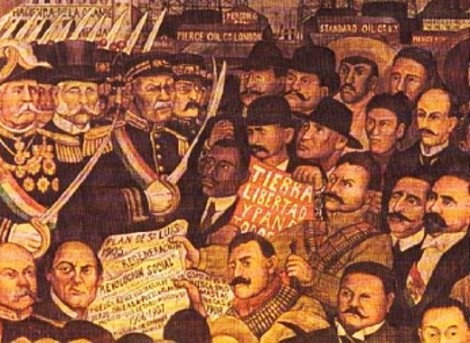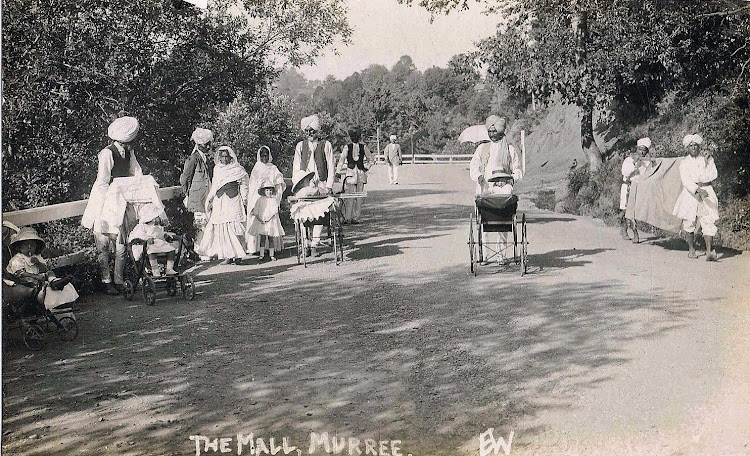
A Punjabi family in America circa the early 1900s. [History of Indian Diaspora]
“The 6,800 or so Indians who came to the western United States between 1899 and 1914 were chiefly peasants from India’s Punjab province, men from martial castes and landowning families. They were portrayed as illiterate and backward.” – Karen Leonard, Asian American History, and Culture: Making Ethnic Choices: California’s Punjabi Mexican Americans (p. 24).
Punjab was ruled by the British from 1849 when it was annexed by the brutal East India Company to 1947 when India gained its independence and Punjab was partitioned into two. Agriculture and farming were and are the biggest economic drivers in Punjab, and Punjab was the model agricultural economy of the British empire at the time.
Above are a photo and depiction of Punjabi (mostly Sikh) farmers and laborers working. The British allowed a section of Punjabis the right to own land but restricted others and heavy investment in irrigation projects benefitted moneylenders, the government, and privileged landlords, but left many farmers in debt. As a result, some Punjabis chose to leave Punjab and immigrate to places like Canada and the United States.
#ThrowbackThursday to the late 1800s when the first Punjabi immigrants came to Canada.
Punjabi men continued to come to Canada throughout the early 1900s to earn money for their families back home. Many worked in BC’s robust forest industry.https://t.co/lKpTWkQJm5 #pclp pic.twitter.com/cv43zVCgs9
— Royal BC Museum (@RoyalBCMuseum) May 25, 2018

Some of the first Indian pioneers above arriving in America.
What conditions did Punjabis face when they came to the United States?

Indian men, namely Sikhs, faced nativism and racism on the shores of the United States, as they were grouped under the umbrella term “Hindu“.
The California Alien Land Act of 1913 denied “to aliens ineligible for citizenship the right to own, lease, or otherwise enjoy [the] land. As a result, Punjabis [among other immigrants] were discriminated against, not considered citizens, and even barred from bringing wives from India, creating a clear dilemma.
In 2016, it's banning Muslims, in early-mid 1900s, it was Asians — which stranded Punjabi settlers https://t.co/y2i5aTG6U7 #Election2016
— Nicholas Fouriezos (@nick4iezos) January 13, 2016
Punjabis have been marrying Mexicans since the early 1900s when very few Indian men somehow immigrated to California (Asians weren't allowed to legally immigrate to the U.S. until after 1965). So there's lots of history there. https://t.co/xr3p6ji3iJ
— JustAName (@f00lish_dharma) May 19, 2018
Approximately 2,000 Indians (85% of them Sikh) were in the United States in 1899, mostly students or businessmen. Indian immigration to the United States peaked during 1907-1908 and again in 1910, but only an estimated ten to twenty Indian women entering as immigrants each year. The number of male immigrants, as well as the percentage of Indian women to men, was the lowest for any group immigrating from Asia.

In 1924, Congress passed the Oriental Exclusion Act which banned most immigration from Asia and hampered Indian immigration. During this period many Indians, mostly Punjabis, entered the country illegally by going first to Panama and then coming up through Mexico and crossing the border. For a fee, an established network would facilitate the border-crossing. One man, Joginder Singh who was known as “Jog”, however, found that he had to pay a higher fee. He “entered the United States in 1922 through Mexico at the cost of $400. The usual price for smuggling at that time was $200 if the alien would shave off his beard and remove his turban so as to hide his East Indian identity. Jog refused to cooperate, however, and was smuggled across the International border at the higher price.”
Why did Mexicans, namely Mexican women, immigrate to the United States? What was the status of Mexican women in American society?
“Most of these women came across the border after the Mexican Civil War…They supported themselves by working in the cotton fields of places like California, doing hard physical labor… so if they could marry the boss, hey. It was a leg up.” – Leonard

During the Mexican Revolution from 1910 to 1920, hundreds of thousands of Mexicans fled the violence, many coming to the United States in places like California and Texas to find work.

Land and liberty were major themes of the Mexican Revolution.

The Magonistas versus the Diaz Dictatorship during the Magonista Rebellion of 1911, one of the first uprisings of the Mexican Revolution.

Young Mexican-American women work as farmhands. Many Mexican women came to work on farms in America and maintained their Mexican heritage while in the U.S.
Early 1900s: Punjabi men were stranded and Mexican widows were escaping war. https://t.co/YGqAvtougH by @nick4iezos pic.twitter.com/NW0Aj4Zebh
— PRI's Global Nation (@globalnation) January 14, 2016

